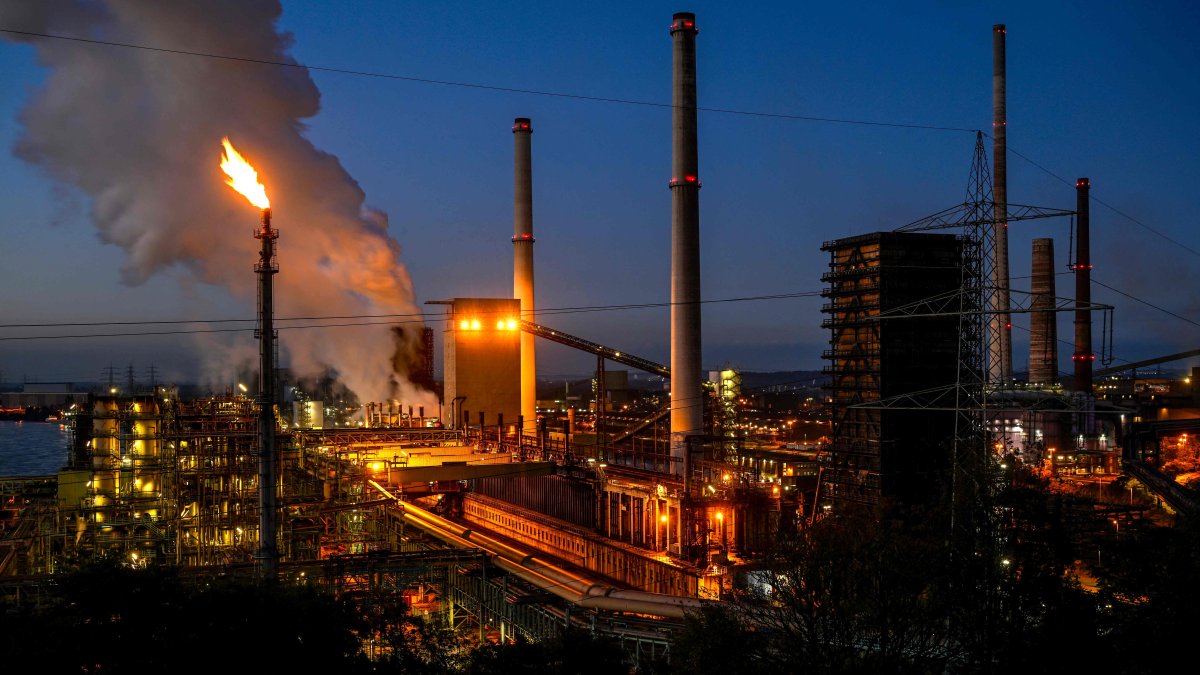The European Union unveiled plans on Tuesday to cut its tariff-free quota on steel and steel products by almost half, effectively adding hefty tariffs on imports from countries including China, India, Türkiye and the U.K, which said the measures would wreck the domestic steel industry.
After reaching a new quota of 18.3 million tons of imports, additional imports will face a 50% tariff. This is double the current 25% rate – a high price akin to those imposed by U.S. President Donald Trump on steel.
Neighboring nations, such as Norway, Iceland and Ukraine, will be exempt.
The proposal aims to support Europe’s traditional steel manufacturers by imposing trade barriers, thereby preventing European markets from being flooded with imports diverted by the high American tariffs imposed earlier this year.
Steel importers would be required to declare where the products were melted and poured clearly, and a complex quota system would govern what enters the EU common market. The proposal replaces the current steel safeguard policy, which is aligned with the World Trade Organization (WTO) and is set to expire in June 2026.
“A strong, decarbonized steel sector is vital for the EU’s competitiveness, economic security and strategic autonomy. Global overcapacity is damaging our industry,” said European Commission President Ursula von der Leyen.
The European Parliament and the European Council must now ratify or amend the proposal, which then might require negotiations with the WTO to check how member countries are affected by the measures.
The EU exported 77 billion euros ($89.7 billion) and imported 73.1 billion euros worth of steel in 2024, according to Eurostat, the EU’s statistics agency.
The European Steel Association estimates that global steel overcapacity is growing at around 602 million tons, which is four times the EU’s total annual steel consumption.
Judith Kirton-Darling, confederal secretary for the trade union bloc IndustriAll’s Europe office, said in September during the Emergency Steel Social that, “steel is the backbone of Europe’s economy, yet the sector is now at breaking point. That is why trade unionists from every corner of Europe have joined steelmakers at this summit to call for urgent action.”
Stephane Sejourne, the European Commission’s executive vice president for industrial strategy, said the proposal would protect Europe’s industrial future. “This is the new safeguard clause on steel. This is the reindustrialization of Europe,” he said in a post on X.
‘Biggest crisis’
The trade body U.K. Steel said the proposed reduction in the tariff-free quota would spell disaster for the embattled British steel industry. It said more than three-quarters of British steel exports go to the EU.
“This is perhaps the biggest crisis the U.K. steel industry has ever faced,” said U.K. Steel Director-General Gareth Stace. He said the British government “must go all out to leverage our trading relationship with the European Union to secure U.K. country quotas or potentially face disaster.”
Stace said the EU move also risked “redirecting millions of tons of steel towards the U.K.” from countries hit by the tariffs, which “could be terminal for many of our remaining steel companies.”
Prime Minister Keir Starmer said the U.K. is “in discussions with the EU” about the proposal.
“I’ll be able to tell you more in due course, but we are in discussions, as you’d expect,” he said.
Britain’s once-mighty steel industry has shrunk dramatically from its 1970s peak and now accounts for 0.1% of the economy. Thousands of jobs are due to be lost at the country’s biggest steelworks, at Port Talbot in Wales, as owner Tata Steel tries to make the unprofitable plant leaner and greener.
Community, a trade union that represents many steelworkers, said the EU’s proposal was “an existential threat to our steel industry.”
“Global overcapacity is a shared challenge and it is in both the U.K. and the EU’s interests to work together to find a solution,” said the union’s Assistant General Secretary Alasdair McDiarmid.
“A trade war, at what is already a turbulent time for the global steel industry, would be incredibly damaging for everyone involved, with workers in the U.K. and Europe paying the heaviest price.”
Steel manufacturers employ about 300,000 people across 20 of the bloc’s 27 nations. But it has been hard-hit over the past two decades, losing perhaps a quarter of its employees, according to Eurostat. Steel is a foundational industry in the EU. The bloc evolved out of the 1951 European Coal and Steel Community, a common market among Luxembourg, Italy, France, the Netherlands, West Germany and Belgium.
The United States and the EU have a tenuous trade agreement that has yet to include specific measures for products such as whiskey, wine and steel. But, American and European negotiators have stated that they are working on a “ring-fencing” or coordinating approach to steel tariffs, aiming to secure supply chains between the two economic juggernauts.
EU trade representative Maros Sefcovic said the steel tariffs and quotas would be discussed on Friday in South Africa during a meeting of trade ministers from the G-20 countries.

